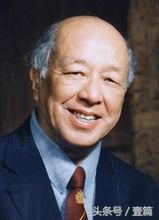美国《临床肿瘤杂志》:老年乳腺癌幸存者需要每年进行乳腺钼靶监测吗?


美国《临床肿瘤杂志》2017年7月27日在线先发
http://ascopubs.org/doi/full/10.1200/JCO.2016.72.1209
在老年乳腺癌幸存者中通过预期寿命评价乳腺钼靶监测的使用情况目的
对预期寿命有限的老年乳腺癌幸存者实行每年乳腺钼靶检查是否获益尚不清楚,而且还有风险,但目前人们对这些女性使用乳腺钼靶的情况知之甚少。
材料和方法
我们采用2000、2005、2008、2010、2013和2015年“国民健康访谈调查数据”,在年龄≥65岁、报告有乳腺癌病史的女性中研究乳腺钼靶的使用情况。我们采用多因素Logistic回归分析,通过预期寿命5年、10年(使用验证勋伯格指数),评估了的患者过去12个月内做乳腺钼靶的概率,并对调查年份、地区、年龄、婚姻状况、保险情况、教育程度、保险和医疗指标进行校正。
结果
1040名调查对象中,33.7%的年龄≥80岁,88.6%为白种人。约8.6%和35.1%的患者估算的预期寿命分别≤5年和≤10年。总体上,78.9%的人在过去12个月里进行了常规乳腺钼靶检查。尽管在估算的预期寿命≤5年和≤10年的患者中分别有56.7%和65.9%的人报告过去1年接受过钼靶检查,但随着预期寿命的降低,接受乳腺钼靶检查的人数减少。相反,预期寿命>10年的患者中,14.1%没有报告行乳腺钼靶检查。在校正分析中,预期寿命越少(对比越高)、乳腺钼靶检查率越低(对于预期寿命≤5年的比值比,0.4;95%CI,0.3-0.8。对于预期寿命≤10年的比值比,0.4;95%CI,0.3-0.6)。
结论
尽管不知道每年乳腺钼靶监测是否获益,但估算的预期寿命短(<5年)的老年乳腺癌幸存者仍有很多人(57%)每年接受乳腺钼靶检查,而估计预期寿命>10年的患者有14%没有报告进行乳腺钼靶检查。对于老年患者,需要有实践指南来优化和调整后续医疗。
《壹篇》王津京



http://ascopubs.org/doi/full/10.1200/JCO.2016.72.1209
Purpose
The benefits of annual surveillance mammography in older breast cancer survivors with limited life expectancy are not known, and there are important risks; however, little is known about mammography use among these women.
Materials and Methods
We used National Health Interview Study data from 2000, 2005, 2008, 2010, 2013, and 2015 to examine surveillance mammography use among women age ≥ 65 years who reported a history of breast cancer. Using multivariable logistic regression, we assessed the probability of mammography within the last 12 months by 5- and 10-year life expectancy (using the validated Schonberg index), adjusting for survey year, region, age, marital status, insurance, educational attainment, and indicators of access to care.
Results
Of 1,040 respondents, 33.7% were age ≥ 80 years and 88.6% were white. Approximately 8.6% and 35.1% had an estimated life expectancy of ≤ 5 and ≤ 10 years, respectively. Overall, 78.9% reported having routine surveillance mammography in the last 12 months. Receipt of mammography decreased with decreasing life expectancy (P < .001), although 56.7% and 65.9% of those with estimated ≤ 5-year and ≤ 10-year life expectancy, respectively, reported mammography in the last year. Conversely, 14.1% of those with life expectancy > 10 years did not report mammography. In adjusted analyses, lower (v higher) life expectancy was significantly associated with lower odds of mammography (odds ratio, 0.4; 95% CI, 0.3 to 0.8 for ≤ 5-year life expectancy and OR, 0.4; 95% CI, 0.3 to 0.6 for ≤ 10-year life expectancy).
Conclusion
Many (57%) older breast cancer survivors with an estimated short life expectancy (< 5 years) receive annual surveillance mammography despite unknown benefits, whereas 14% with estimated life expectancy > 10 years did not report mammography. Practice guidelines are needed to optimize and tailor follow-up care for older patients.

《壹篇》(与桓兴医讯同步)系主要面向医务人员的公益性头条号,不以营利为目的,不进行任何有偿咨询和服务,不出售任何产品,与ASCO、CSCO等所有专业学会和机构没有任何关系和联系,也不代表任何官方学会发声。
文章图片均来自网络,不做商业用途,若有版权争议请与《壹篇》联系。
坚持点赞、赞赏和转发是一种态度和支持。